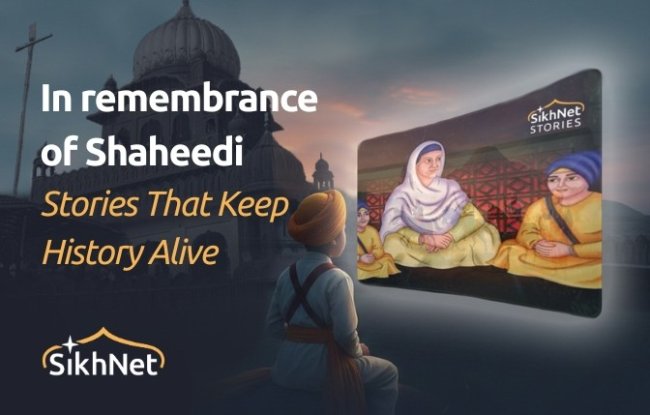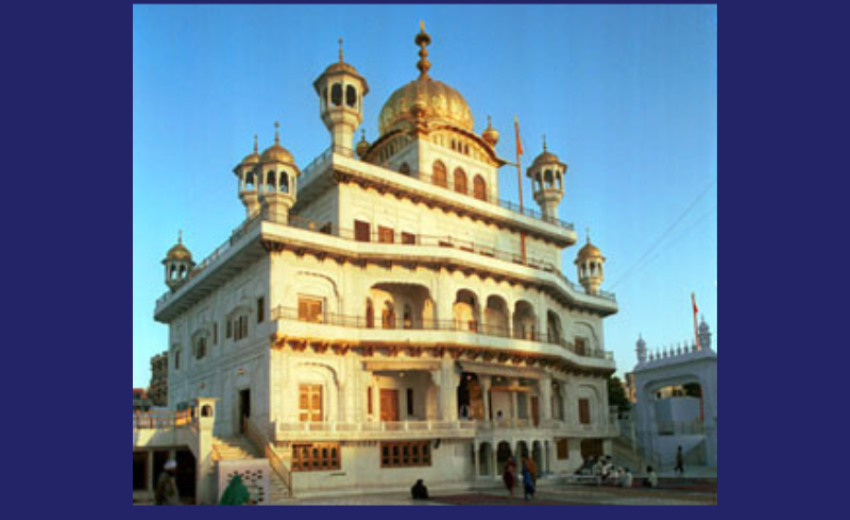Preface
Through this article, a framework is humbly presented before the universal Sikh Sangat, revered Sikh bodies, esteemed institutions, and Sikh scholars. This serves as a baseline, a starting point for vital discussions leading to the formulation of a plan to restore the Glory of Shri Akal Takht Sahib.
Restoring Glory: A Framework for the Appointment of Jathedars
The global Sikh community holds an unparalleled reverence and respect for Shri Akal Takht Sahib. This supreme temporal seat serves as a poignant reminder of our lost glory, its historical power, authority, and unwavering influence over the Sarkar-e-Khalsa, even holding its head, Maharaja Ranjit Singh, answerable to its pronouncements. Yet, it simultaneously stands as its most steadfast ally in times of need. Sikhs across the world dream of a Jathedar of the towering caliber of Akali Phoola Singh Ji, a leader whose authority was absolute and universally accepted. However, over the last few decades, and particularly in light of recent events marked by discernible tussles between the Takhats and pervasive political interference – including instances where Jathedars have been abruptly removed and visible friction between Takhats like Shri Akal Takht Sahib and Takht Sri Patna Sahib – a deep anger and anguish have taken root among Sikhs, profoundly shaking their faith in these vital institutions.
The Sikh masses yearn for this temporal seat to possess genuine authority and inherent power to effectively check the administration and political dispensations, guiding them firmly towards the righteous path of Sikh principles. Tragically, what we have witnessed instead is political entities gradually bringing this temporal seat under their control, shamelessly exploiting its spiritual and historical significance to further their own agendas, much to the detriment of this great and sacred institution. The time for passive observation is over; the moment has arrived to fundamentally overhaul the existing system, to reclaim the pristine glory and irrevocably restore the exalted status of this great seat of temporal power, precisely as envisioned by our revered Gurus.
There can indeed be numerous approaches and procedures for the selection and appointment of Jathedars. However, what is presented here is a suggested framework—a comprehensive blueprint designed to serve as a foundational basis for extensive and collaborative discussions. This proposed structure is not rigid; it invites numerous additions, refinements, and even deletions, all aimed at arriving at the most robust and universally acceptable process and procedure.
Principles of Selection: Inclusivity vs. Exclusivity
The very first and arguably most crucial decision to be made pertains to the fundamental principle of exclusivity or inclusivity in the selection process. This singular decision will undeniably have far-reaching and profound effects on the future trajectory of the Sikh community worldwide. Under the present system, only baptized Sikhs (Amritdhari Sikhs) are eligible to vote for SGPC members, who, in turn, select and appoint the Jathedars. This arrangement effectively renders the Jathedar an employee of the SGPC, placing them under the institution's direct control and influence. Consequently, Sehajdhari Sikhs (those who identify as Sikh but have not taken Amrit) currently have no say in this pivotal matter.
As per the foundational tenets and all-encompassing spirit of Sikhism, inclusivity must be the chosen path if the Sikh community genuinely aspires to unite under one cohesive umbrella of the Panth. While arguments against inclusivity might raise concerns about inviting interference from non-Sikhs or external agencies, and potential dilution of core principles, these can be effectively countered. Checks and balances can be ensured such that only genuine Sikhs participate in voting, and crucially, all members of the electoral college must be Amritdhari. Furthermore, embracing inclusivity offers a vital chance for reform and engagement; by keeping a significant portion of the community at a distance, we lose valuable leverage for positive change and broader unity. Involving all who profess Sikhism as their religion will grant universal acceptance and legitimacy to the Jathedar, fostering unity and potentially bringing presently warring factions under the revered guidance of a single, widely accepted spiritual and temporal head.
Methods of Selection: Direct vs. Electoral College
Once the principle of inclusivity is established, the next critical consideration involves the method of selection. Broadly, there can be two distinct approaches: a direct method involving individual votes, or an indirect method through an electoral college.
Defining Jurisdiction and Community Involvement
For the active and meaningful involvement of the entire Sikh community, including the vast and vibrant diaspora overseas, it is absolutely imperative that the area of jurisdiction of each Takhat be clearly and precisely defined. The Sikh public should be empowered to participate in the election process—be it direct or indirect—for the Jathedar of their respective Takhat, and by extension, in the selection of the Jathedar of Shri Akal Takht Sahib.
Division of Jurisdiction
Currently, there are five Takhats: three in Punjab (Shri Akal Takht Sahib, Takht Sri Kesgarh Sahib, Takht Sri Damdama Sahib) and one each in Bihar (Takht Sri Patna Sahib) and Maharashtra (Takht Sri Hazur Sahib). For Punjab, the division of jurisdiction can be effectively based on existing districts, aligning local communities with their nearest or historically significant Takhat. Sikh populations in all other states of India can be similarly aligned with any of the Takhats, based on predefined criteria such as historical ties, population density, or logistical convenience. For the large migratory Sikh populations from Punjab and Haryana, the option to choose a Takhat based on their original region or current proximity can be provided. Crucially, Sikhs residing abroad must also be granted voting rights for one of the Takhats, with alignment made country-wise. This meticulous division ensures that the global Sikh population has direct, meaningful participation in the selection process, fostering a sense of ownership and collective responsibility.
Eligibility Criteria and Nomination
The next crucial step involves establishing robust eligibility criteria and a transparent nomination process for candidates. The basic qualifications should undoubtedly include being a profound scholar with a deep grasp of Sikh philosophy and history, comparative world theology, and an intricate understanding of Sikh scriptures. Candidates should also possess extensive experience in community service, high moral character, and be politically very aware, demonstrating a deep interest in Panthic affairs and a proven ability to effectively represent the diverse aspirations of Sikhs worldwide. A dedicated body of esteemed Sikh scholars and theologians should further refine these eligibility criteria to ensure the highest standards.
To foster broad-based participation, renowned Sikh organizations and institutions should be permitted to nominate candidates. These include prominent Singh Sabhas, revered Damdami Taksal, esteemed Nihang Jathebandis, the Chief Khalsa Diwan, and various other respected Sant Samaj organizations that uphold the supremacy of Shri Akal Takht Sahib. The specific criteria for who can nominate—perhaps based on their verifiable membership numbers (representing their strength and numbers of Sikhs) or established Panthic contributions—can be fixed separately, with transparency ensured through clear, quantifiable metrics. This ensures that nominations are rooted in the community's recognized and respected institutions.
The Electoral Process: A Focus on Unity
Direct elections, while seemingly democratic, carry the inherent risk of causing deep divisions within the community, often resulting in narrow victories where, for instance, 49% of the electorate might oppose a candidate supported by only 51%. To mitigate this potential for fragmentation and to ensure a broader consensus, it is advisable to utilize an electoral college system.
Under this model, each specified geographical area (e.g., a defined number of Sikh electorates, such as 10,000 to 50,000 baptized and Sehajdhari Sikhs combined) would elect one member to the electoral college. This approach ensures wide representation while buffering the direct impact of narrow popular votes. To guarantee that candidates secure overwhelming majority support, a system of repeated rounds of voting could be implemented, systematically eliminating the candidate with the least votes in each round until a clear winner emerges with a substantial mandate. Alternatively, a transfer of votes system could be considered to achieve the same outcome.
The proposed electoral college should ideally comprise approximately 500 members. This number is suggested as it balances broad representation from the 25-30 million global Sikh population with practical manageability. These members would then collectively vote for the election of Jathedars. The paramount idea here is to ensure that the elected Jathedar receives a strong mandate, fostering a deep sense of attachment, ownership, and collective endorsement from each electoral college member.
Election of the Jathedar of Shri Akal Takht Sahib
The selection of the Jathedar of Shri Akal Takht Sahib, being the supreme temporal authority, requires particular deliberation. There can be various thoughtful ways to elect this pivotal figure.
Here are compelling options:
* Option 1: Centralized Election by Full Electoral College
The entire 500-member electoral college first elects the Jathedars for the four other Takhats (Takht Sri Kesgarh Sahib, Takht Sri Damdama Sahib, Takht Sri Patna Sahib, Takht Sri Hazur Sahib). Following this, the same 500-member electoral college then directly elects the Jathedar of Shri Akal Takht Sahib. This ensures that the supreme Jathedar is chosen by the broadest possible representation.
* Option 2: Selection by Elected Takhat Jathedars
Separate groups of electoral college members (e.g., 125 members each) elect Jathedars for the four other Takhats. Subsequently, these four elected Takhat Jathedars, acting as a collective body, then choose the Jathedar of Shri Akal Takht Sahib. For a valid selection, a clear majority (e.g., at least three of the four) must agree on one name, ensuring a consensual choice among the Takhat heads.
The core objective in any method adopted must be to ensure that the chosen Jathedar of Shri Akal Takht Sahib commands the profound respect and support of the entire Panth, deriving legitimacy from the collective voice of the electoral college members.
Tenure and Defined Rules
To ensure stability and provide a sufficient period for effective leadership, elections should be held at fixed intervals, perhaps every 5 to 8 years. Crucially, the rules and regulations governing the conduct and authority of the Jathedars should be meticulously framed by the electoral college itself, rather than external political bodies. The role of the SGPC, while vital for administration and management of Gurdwaras, should be clearly delineated and confined to these organizational aspects, separate from the spiritual and temporal authority of the Takhats.
The jurisdiction of each Takhat—both geographical and issue-based—must be precisely fixed and publicly documented, eliminating any ambiguity that could lead to conflicts. Furthermore, all major Panthic decisions of global significance should be taken collectively by a majority consensus of the five Jathedars, ensuring a unified and strong leadership voice. Clear rules and regulations, transparently laid down, are fundamental to avoiding future misunderstandings, disputes, and external interference.
Epilogue: A Call for Unity and Action
This framework, offered with utmost humility, serves as a foundational suggestion before the global Sikh Sangat. The entire process and procedure can, and indeed should, be laid out in far greater detail and rigorously fine-tuned through extensive consultation and dialogue within the community.
Sikh Sangat is requested to engage with this framework, share insights, and pass resolutions in local Gurdwaras, organizations, and gatherings. These resolutions, indicating their collective strength and support, should be sent to the five Takhats, the SGPC, prominent Sikh scholars, Sant Samaj, Nihang Jathebandis, Chief Khalsa Diwan, and other respected Sikh institutions.
This concerted effort calls for the earnest deliberation of the entire Panth, facilitating discussions and seminars across all communities globally, so that a universally acceptable framework can finally be reached. An appeal is made to Sikh bodies and Sikh scholars to take the lead in this crucial process, to strengthen institutions and ensure Shri Akal Takht Sahib's revered authority is fully restored, fostering unity and truly restoring the glory of our revered Takhats, in the true spirit of Sikhism.


